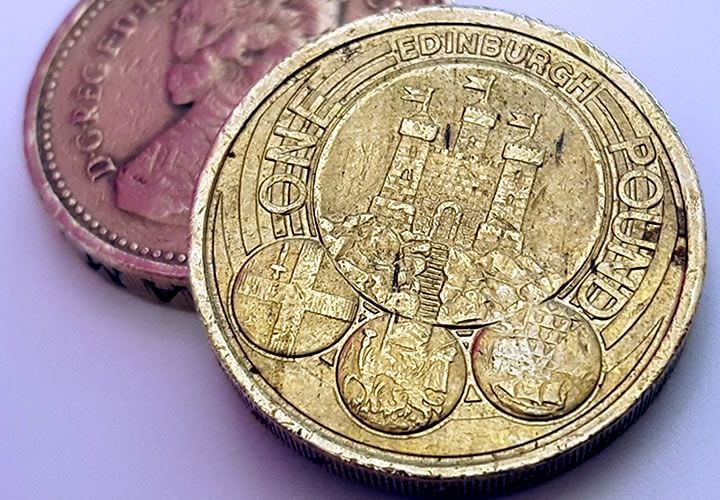Pound Could Go to 1.1450 Vs Euro as BoE Hikes and Single Currency Struggles To Profit From ECB
- Written by: James Skinner
-

A bullish setup on the charts comes barely a week ahead of the Bank of England’s November rate announcement and could see GBP/EUR go to 1.1450.
The Pound could extend gains on the Euro over the coming days, according to technical strategists, even after a better than expected GDP report drove the currency pair sharply higher Wednesday.
Sterling could trade as high as 1.1450 against the common currency in the coming days and weeks as an earlier downtrend in the currency pair continues to unravel.
Bearish bets against the Pound begun to unwind Friday, after the October European Council summit concluded with most European politicians adopting a more conciliatory tone on the subject of Brexit negotiations.
This took the wind out of the Euro’s sails, marking the beginning of a trend that continued broadly into the new week and accelerated on Wednesday with the release of a better than expected third-quarter GDP report.
Wednesday's GDP report saw bond markets assign an 89% probability to the idea the BoE will raise interest rates for the first time in a decade next week.
The Pound-to-Euro rate rose more than 100 points Wednesday to trade as high as 1.1259 during the noon session, reducing its 2017 loss to a little over -4%.
“We see limited room for the euro to profit from the announcement of less aggressive asset purchases,” says David Kohl, chief currency strategist at Swiss wealth manager, Julius Baer.
It is also possible that Euro weakness could help push the Pound-to-Euro rate higher as some strategists are clearly beginning to question how much further it can go.
“The sharp reversal from Friday’s 0.9023 high has seen intra-day momentum partially unwind from elevated levels. Yet, there is scope for this to extend, warning of a deeper decline in the cross,” says Gajan Mahadevan, a quantitative strategist at Lloyds Banking Group.
The current bullish technical setup looked to be in danger when Bank of England rate setter Jon Cunliffe suggested a rate hike on November 02 was far from a done deal.
But Wednesday’s GDP report has put paid to any lingering notions of scepticism in the market. There is little that seems likely to happen over the coming week that could dislodge market expectations of a move from the BoE.
“Long term, we still risk a re-test and break of the 2008 highs at 0.9802, although the decline from 0.9300 through 0.8800 decreases the risks somewhat and leaves us in a medium-term range. A break of 0.8250 reverses the risk completely,” says Mahadevan.
A retest of the 0.9800 level for the Euro-to-Pound pair would put the Pound-to-Euro rate at 1.0200.
"Last week EUR/GBP again failed slightly below its early October high at .9034, namely at .9026, and is on the defensive," says Karen Jones, a technical analyst at Commerzbank. "Support now comes in around the current October low at .8856."
The 0.8856 support level Jones refers to equates to a Pound-to-Euro rate of 1.1291, which might form a short-term resistance level for Sterling.
“There is scope for the 55 week moving average at 0.8729 to be reached,” says Jones, referring to a level of EUR/GBP that would see the Pound-to-Euro rate reach 1.1456.
What matters now for the Pound-to-Euro rate is the extent to which markets become willing to bet on further rate hikes to come from the Bank of England once into 2018.
“Given our relatively upbeat assessment of the outlook for GDP and earnings growth, we expect three further 25bp increases in 2018, taking Bank Rate to 1.25% by year-end,” says Paul Hollingsworth, a senior economist at Capital Economics.
Markets could become increasingly willing to price further rate hikes beyond November if the BoE decides to strengthen its forward guidance in next week’s policy statement.
“Current pricing suggests the market is anticipating only one further hike in 2018," says Kallum Pickering, senior UK economist at Berenberg. "We therefore expect the BoE to strengthen its guidance after the first hike, leading to a somewhat steeper gilt curve and possibly a stronger sterling on a trade-weighted basis by the turn of the year."
Get up to 5% more foreign exchange by using a specialist provider by getting closer to the real market rate and avoid the gaping spreads charged by your bank for international payments. Learn more here.




